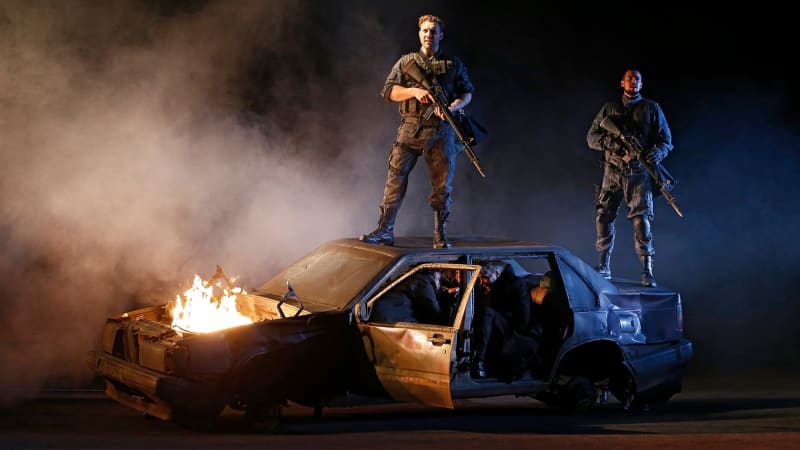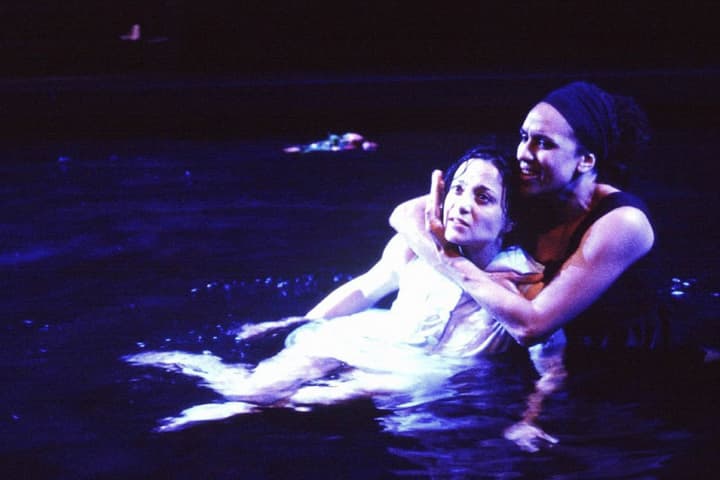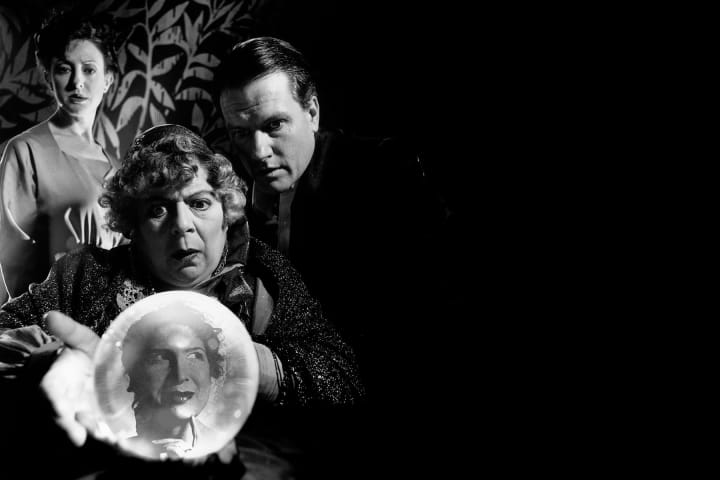‘Do you have an armoury dept?’ asks Simon, and ‘who is responsible for bangs, guns and special effects (SFX)?’ To answer, Allan Hirons, the Company’s Senior Production Technician, has helpfully whittled down his notes from a lecture he gave at the Victorian College of the Arts on this very subject.
The props department manages MTC’s armoury, and the technical lighting and sound department handles the bulk of SFX requirements, with the rest taken care of by the props, workshop, paint and wardrobe departments. There are also many occasions when two or more departments will collaborate to create the required effect.
All firearms have been plugged or hobbled to limit their use to blank cartridges, or to render them unable to fire real cartridges. It is, however, very difficult to use real guns firing blanks and pyrotechnic devices in a manner that maintains a safe working environment. High sound-pressure levels, heat and unintended high-velocity ejected matter can be a danger for all cast, crew and audience members. In response to this difficulty, over the last four years MTC’s technical lighting and sound department has been developing a wireless imitation firearm, augmented with existing speakers, lighting and other effects to achieve safe, realistic and reliable gunshots onstage. As there are no blank cartridges or pyrotechnic elements, the imitation firearm itself poses no danger to anyone.

Interior electrics of the prop handgun from Gloria
Photo courtesy of Allan Hirons
Interior electrics of a the western-style revolver from Kiss of the Spider Woman
Photo courtesy of Allan HironsWe have designed an electronic core that handles trigger pulls, muzzle flash and wireless communication with our SFX computer system. The electronic core is then installed inside the shell of an imitation firearm. Depending on the complexity and size of the firearm, they are either built from scratch by our props department or 3D printed by the design department.
The SFX computer system synchronises the deployment of sound effects, muzzle flash, cartridge ejection, ricochets and blood splatter. Cleaning fake blood off your face after testing isn’t fun at the half-hour call, so the system also allows us to control when the SFX can be set off by the firearm trigger. Deadman safety switches and electronic trigger locks not only keep your face clean, they allow the stage manager and crew to manually limit SFX triggering to times when it’s safe to do so. Cast missing a mark or entering late could create an unsafe situation onstage, so having a way to stop an effect from triggering is essential.
In 2018, Lisa McCune used this system at the end of Act 1 in Gloria. The firearms effects were created using a combination of:
- one large speaker under the desk
- three small air-powered cartridge ejectors under the stairs and in-between floorboards
- two dust ejectors in the walls
- and several blood launchers hidden in tissue boxes and scenic pillars
Using the wireless imitation firearm, McCune was able to fire 240 shots across the season, in close proximity and directly at other cast members and herself without any risk to life or limb. Every shot worked, and many litres of fake blood and brains were joyfully cleaned up by the crew!

Lisa McCune with the gun in Gloria, 2018
Photo: Brett Boardman
A prop machine gun in Vivid White
Photo: Jeff Busby
Nadine Garner and Paul Goddard in Photograph 51
Photo: Pia Johnson
The revolver in Kiss of the Spider Woman, 2019
Photo: Jeff Busby
Melita Jurisic and Diana Glenn in Arbus & West, 2019
Photo: Jeff Busby
Macbeth also featured many prop guns
Photo: Jeff BusbyWhile commissioning and testing the hero-shot blood cannon, I had triggered a test fire of the cannon. The expectation of blood splashing across the window was denied and moments later red rain came down from above, with small drops covering most of the stage. I had forgotten to replace the filler cap at the top of the blood reservoir, sending half a litre of blood straight up the back side of the set and into the lighting rig above! Gloria caused a lot of mess… cleaning would commence, again.
The system has been also used for the machine gun in Vivid White, the blunderbuss in Storm Boy, Kiss of the Spider Woman’s revolver, and even the camera flash in Photograph 51. Similarly, it was used with the camera/camera flash in Arbus & West, where it was rigged to allowed Diana Glenn to wind on the camera and press the shutter release, which would then trigger the SFX system to tell the camera flash, sound system and lighting console to flash and pop at the same time. This gave Glenn great freedom to choose when she felt right to take a photo, as opposed to the very tight choreography of the whole sequence in other situations.
Have something to ask MTC? You can submit your question and in the coming weeks it might be yours that we answer.
Published on 16 December 2020





